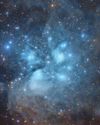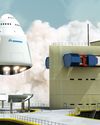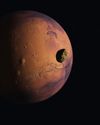ASK Space
All About Space
|Issue 124
Our experts answer your questions
-

The Sun’s atmosphere is hotter than its surface because of energy transported and deposited by the Sun’s magnetic field. The magnetic field is created in the solar interior and carried outwards to fill the atmosphere by the motion of hot bubbles of plasma in the Sun. In the atmosphere, the field lines are constantly moved by the motions of the magnetic footpoints at the Sun’s surface. These motions cause waves and reconfiguration of the atmospheric field. These in turn act to heat the atmospheric plasma.
Since the atmosphere is a plasma – a gas of electrons and protons not combined into atoms – the magnetic field and the gas are interconnected; if you move the field, you move the gas, and vice versa. There are many competing ideas as to how changes in the magnetic field lead to a heating of the plasma, and this is the focus of intense current research. New observations from both space missions and ground-based telescopes are now enabling scientists to address coronal heating, and a more clear picture should arise in the coming decade.
Dr Huw Morgan, director of research and head of Solar System physics, Aberystwyth University

ASTROPHYSICS
This story is from the Issue 124 edition of All About Space.
Subscribe to Magzter GOLD to access thousands of curated premium stories, and 10,000+ magazines and newspapers.
Already a subscriber? Sign In
MORE STORIES FROM All About Space

All About Space UK
MYSTERIES OF THE UNI WHERE ARE ALL THE SPIRAL GALAXIES?
There are far fewer spiral galaxies than elliptical ones in the Supergalactic Plane, and scientists are keen to discover why
7 mins
Issue 161

All About Space UK
ZOMBIE STARS
+10 OTHER TERRIFYING SPACE OBJECTS
8 mins
Issue 161

All About Space UK
HOW TO BEAT LIGHT POLLUTION
Thought it was impossible to observe the wonders of the night sky from towns and cities? Think again. Follow our tips and tricks on successfully observing through sky glow
2 mins
Issue 161

All About Space UK
15 STUNNING STAR CLUSTERS
These beautiful stellar groupings are spattered across the cosmos
8 mins
Issue 161

All About Space UK
Eileen Collins "It was a difficult mission...we were the first to see Mir"
Having served as both the first female pilot and first female commander of NASA's Space Shuttle, Collins boosted the involvement of women in space exploration to a whole new level
9 mins
Issue 161

All About Space UK
MARS LEAKS FASTER WHEN IT'S CLOSER TO THE SUN
The Red Planet has lost enough water to space to form a global ocean hundreds of kilometres deep
2 mins
Issue 161

All About Space UK
FUTURE TECH KANKOH-MARU
This ambitious reusable spacecraft will be capable of taking 50 people to and from orbit
2 mins
Issue 161

All About Space UK
THE FINAL FRONTIER
Beyond the reach of the Sun is a fascinating region of the cosmos that were only just beginning to explore
8 mins
Issue 161

All About Space UK
A long-lost moon could explain Mars' weird shape and extreme terrain
A long-lost moon could explain why Mars is so different from the other rocky planets in the Solar System. Today Mars has two tiny moons.
2 mins
Issue 161

All About Space UK
A sprinkling of cosmic dust may have helped kick-start life on Earth
Cosmic dust may have helped kick-start life on Earth. New findings challenge a widely held assumption that this wasn't a plausible explanation.
3 mins
Issue 161
Translate
Change font size

